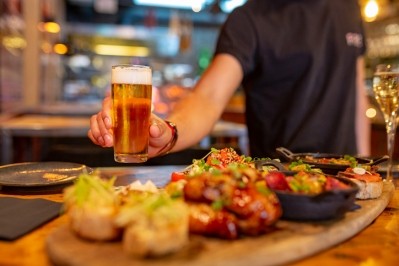What’s inspiring innovation in low-to-no beverages?
Global sales of low- and no-alcohol beverages are surging. Market research firm IWSR, consumption is 31% by 2024 across 10 markets: Australia, Brazil, Canada, France, Germany, Japan, South Africa, Spain, the UK and the US. Collectively, these countries account for 75% of the low-to-no sector.
Daniel Woolfson, food and drink editor at The Grocer, told a recent IFF event on the topic – NOLO LAND – that the sector has ‘exploded’, with growth propelled by evolving consumer behaviour during COVID-19 lockdowns.
“The pandemic has helped a lot of fledgling low and no brands because it has created an environment in which people aren’t wanting to drink full strength alcohol at home all week and they are more eager to try different brands by buying them online, more open to different forms of marketing, different channels,” Woolfson believes.
“The general consensus in the drinks industry in the UK is that this really is the most exciting area of growth, of product development potentially, and in many cases, it’s seen as a really good opportunity for investment. People are comparing it to the early years of plant-based.”
So, what is driving expansion in low-to-no beverages?
The biggest factor supporting growth are the improvements low- and no-alcohol beverage manufacturers have made to improve the organoleptic profile of their products Katy Askew, Senior Editor of FoodNavigator, told the IFF event.
“Dynamic growth seen in low-to-no can be linked to the leaps and bounds made in improving the drinking experience…. Improved depth of flavour, aroma and mouthfeel have been essential in drawing consumers into the category,” she suggested.
Future innovation will be needed to ‘carve out’ an identity between soft and alcoholic drinks, BeverageDaily editor Rachel Arthur contended. This can be achieved by highlighting artisanal ingredients, production processes, or segment’s health and wellness credentials, she suggested.
It is widely recognised that moderate consumption of beers and wines delivers health benefits associated with their antioxidant content. But consumers are also looking at negative health implications of energy and alcohol content. “If health is supporting growth in low-to-no, there could be a really great opportunity to tap into this further by working with functional ingredients,” Askew agreed pointing to the potential to work with botanicals, mushrooms and – regulation pending - CBD.
While much attention is paid to millennial take-up of low- and non-alcoholic drinks, Arthur suggested that the story around health could increase appeal with another important demographic: healthy agers.
Focusing in on kombucha – a drink that delivers gut health benefits – Lumina Intelligence’s director of insight, Ewa Hudson, highlighted data showing growing consumer engagement.
Lumina, the data and insight business also owned by FoodNavigator publisher William Reed Business Media, tracks online consumer engagement across probiotic categories. “From the growth perspective kombucha sits between well-performing probiotic supplements and even better performing (although from a small base) probiotic cosmetics. The growth for kombcha accelerated in the second half of 2020 placing it in a very good position for the developments in 2021,” Hudson revealed.
All this points to a healthy outlook for the burgeoning low-to-no category.
Watch the video of the presentation, produced in collaboration between William Reed Business Media titles FoodNavigator, BeverageDaily, The Grocer and Lumina Intelligence, for further insights.


























